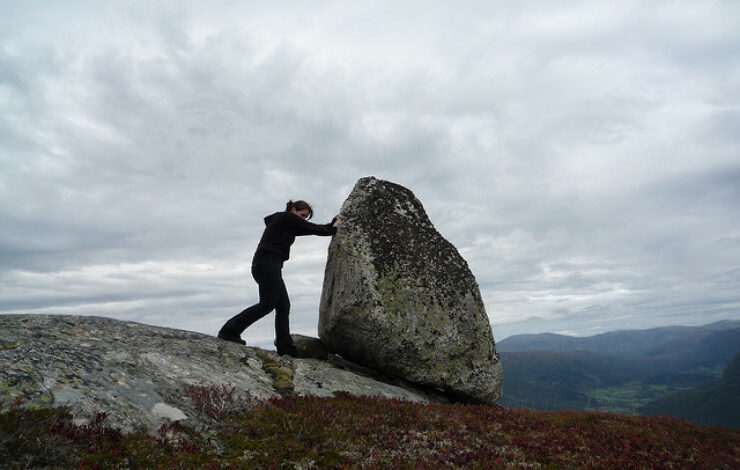Why Do People Resist Change?
Sorry for the bait and switch, but that’s actually the wrong question.
People don’t resist change. They resist doing things they think are stupid. They resist doing things that go against their own interests. And here’s the big one: they resist doing things that don’t make sense to them.
So if you know that you need to make some important changes inside your organization, you should worry less about moving people’s cheese, and you should focus more on whether or not your proposed change makes fundamental sense to the.
That does NOT mean, however, that you should do another all staff meeting and try to convince them why the change is important. Explaining the why is a good thing, of course, but that’s typically not the source of confusion. More often than not, the confusion lies in the fact that the change you’re proposing is really quite disconnected from the reality they are already experiencing.
For example, let’s say that you’re telling me that we all need to shift and start communicating via this new intranet, in order to improve collaboration. Okay, but this seems sort of crazy to me, because we already put the different departments on different floors. It’s easier for me to figure things out on my own than schlep up and down the stairs trying to find people. And on top of that, I end up getting in trouble with my boss if I start working with a colleague from another department unless I know they got permission to do that.
You’re telling me that we need to be more collaborative, but the culture tells me a different story. And all those great reasons for doing collaboration (that you incessantly message in emails to me as part of your change management efforts) never resolve the disconnect. It’s not that the current culture tells me NOT to collaborate, but it tells me in subtle ways that collaboration is something to be controlled and limited in order to protect what each of us is doing within our departments. So this new system—where everyone can suddenly talk to everyone about everything—will not make sense.
Instead, you need to start with a clear picture of what your culture is—and not the aspirational poster version. I want the real version that acknowledges that our collaboration approach to collaboration is kind of traditional—valuing the silos more than breaking them down. I’m already experiencing that, so when you name it, it will make sense to me. And then when you say that you’ve found a relatively easy way to start making a shift (using the intranet), I’ll understand it better. I might see that it’s easier than schlepping up and down the stairs. Suddenly I’m not resisting.
This is one reason why we use our Workplace Genome culture assessment as a discovery tool with our culture change clients. It helps them see their culture more clearly, and that allows them to connect the dots between people’s current experience and the new direction. Dots connected = less resistance.

